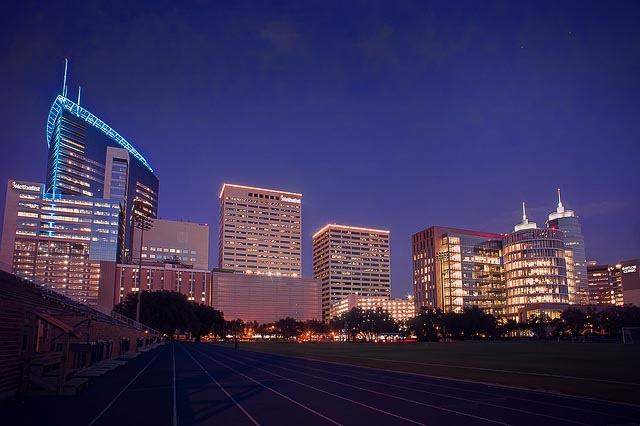Every city in America has healthcare infrastructure. From hospitals, outpatient clinics, and doctors’ offices to research centers and medical schools, such entities collectively represent a huge slice of the American economy and are essential to the success of communities large and small.
But the shape and size of health facilities is changing constantly. The aging baby boomer generation is placing ever-growing demands upon the health system. Meanwhile, the delivery of healthcare itself is evolving as new technologies make non-centralized, networked care more prevalent.
These shifts have pushed real estate developers and their healthcare and medical clients to rethink the purpose and place of the nation’s medical facilities in cities.
Amidst all this roiling, though, several developers speaking at the Urban Land Institute’s spring meeting in Houston last week repeated the same message: America’s medical and health centers remain among the most promising urban economic anchors and catalysts for wider development that our cities possess.
Using examples of public-private development around medical infrastructure, such as University Park in Cambridge, Massachusetts, the speakers argued that well-planned development around health industry hubs represents an unparalleled opportunity to encourage entrepreneurial innovation, research, and broader urban redevelopment.
We are no strangers to this reality in Houston. The Texas Medical Center is an economic and social foundation for our region. According to the city of Houston, the area collectively provides 52,000 jobs and creates about $10 billion in annual economic impact each year. Its influence ripples across the city, visible most directly in the acres of apartments, condos and hotels that house employees and patient’s families nearby.
But even the TMC is searching for ways to expand their entrepreneurial and innovative capabilities. The massive TMC|3 Innovation Campus, currently in the planning stages, is the TMC’s attempt to bring even more innovation, research, and energy to its facilities by locating both public and private entities within new developments.
The ULI speakers agreed that developers have a huge role to play in the effort to encourage the creation of productive spaces within and around existing medical centers. Importantly, they insisted that while bigger cities and metro areas with successful medical and healthcare systems, such as Houston, stand to gain from redevelopment, the smart planning of smaller medical campuses could lead to growth in communities of all sizes.
Moreover, medical and healthcare industries offer great promise to cities that have experienced decades of stagnant or depressed growth, argued Eric Sheffels, president of Leggat McCall Properties, which has worked in Worcester, Mass. and other Rust Belt towns.
The most important thing developers and clients can do to encourage this type of growth to take off is to develop a method by which smaller, entrepreneurial researchers receive support, said Peter Calkins, a vice president Forest City Enterprises Inc. Private or public-private development within medical centers offer the best venue for such efforts, he said.
While a university hospital might be hesitant to change its brand or mission by opening its doors to small entrepreneurs, a private development in close proximity to that hospital could provide a space for collaboration between the institution and the researchers. Calkins’ firm has developed several of those types of collaboration spaces in and around existing medical centers. By working with private, public, and government partners to facilitate the redevelopment of medical-centered hubs, private developers can help create a web of successful facilities that ultimately benefit much more than their company’s bottom line.
Medical and healthcare facilities, similar to other activity nodes like tech hubs, concentrate people with talent and skills, which presents a natural opportunity for innovation and collaboration. The development of campuses where communication, experimentation, and collaboration are encouraged can support public entities by nurturing growing businesses that ultimately contribute to higher tax bases.
But medical facilities also need to incorporate the features of daily life for them to truly exist as part of the fabric of a community, panelists said. Building residential developments around a medical institution, for example, can make it -- and the city, by extension – a more diverse and vibrant place.

